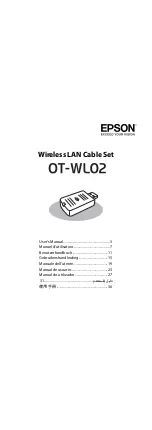
22
NOTE: making a single, deep cut is never advis-
able. Smaller-diameter bits are easily broken by
too much side thrust and torque. Larger bits will
cause a rough cut and be difficult to guide and
control. For these reasons, do not exceed 1/8 in.
depth of cut in a single pass.
WARNING: always securely clamp the work
piece in place, and keep a firm grip on the rout-
er base with both hands at all times. Failure to
do so could result in loss of control causing pos-
sible serious personal injury.
EDGING WITH A PILOT BIT
Arbor-type bits with pilots are excellent for edge
shaping any work piece edge that is straight or
is curved with a curvature that is equal to or
greater than the radius of the bit that is used.
The pilot prevents the bit from making a cut
that is too deep; holding the pilot firmly in con-
tact with the work piece edge throughout the
cutting process prevents the cut from becoming
too shallow.
When the work
piece thick-
ness and the
desired depth
of cut are such
that only the
top part of the
edge will be
shaped, leav-
ing at least a
1/16 inch thick uncut portion below, the pilot
can ride against the uncut portion of the work
piece (Fig. 2).
If the work
piece is too
thin or the bit
is set so low so
that there will
be no uncut
edge against
which to ride
the pilot, an
extra board
must be placed under the work piece to act as a
guide (see Fig. 3).
This “guide” board must have exactly the same
shape as the work piece edge. If it is positioned
so that its edge is flush with the work piece
edge, the bit will make a full cut. If the guide
board is positioned extending beyond the work
piece edge, the bit will make less than a full cut,
altering the shape of the finished edge.
WARNING: always securely clamp the work
piece in place, and keep a firm grip on the rout-
er base with both hands at all times. Failure to
do so could result in loss of control causing pos-
sible serious personal injury.
FEEDING THE ROUTER
(FIG. 4)
The secrets to professional-looking routing are
careful setup for the cut, proper depth-of-cut
selection, knowing how the cutting bit reacts in
the work piece, and the rate and direction of
feed of the router.
DIRECTION OF FEED EXTERNAL CUTS
The router motor and cutting bit rotate clock-
wise. This requires the feed of the cutting bit to
be from left to right (see Fig. 4). Feeding the bit
from left to right will cause the bit to pull the
router towards (up against) the work piece.
If the router is fed in the opposite direction
(right to left), the rotating force of the cutting
bit will tend to throw the bit away from the
work piece, making it hard to control. This is
called “Climb-Cutting” cutting in the opposite
direction of the proper feed direction. “Climb
Cutting” increases the chance of loosing con-
trol, resulting in possible personal injury.
When “Climb Cutting” is required (backing
around a comer, for example), exercise extreme
caution to maintain control of the router.
KICKBACK
Because of the high speed of the cutting bit dur-
ing a proper feeding operation (left to right),
there is very little kickback under normal condi-
tions. However, if the cutting bit strikes a knot,
an area of hard grain in the work piece, or a
foreign object, the normal cutting action could
be affected and cause “Kickback.“
This Kickback may cause damage to your work
piece, and could cause you to lose control of the
router, causing possible personal injury. Kick-
back is always counterclockwise: the opposite
direction of the clockwise cutting bit rotation.
FIG. 2
Motor
housing
Spindle
Collet/Nut
Top edge of work piece
Sub-base
Pilot
Spindle lock
Cutter-
bit
TOP EDGE
SHAPING
FIG. 3
Workpiece
Guide board
Whole edge of work piece
Pilot
WHOLE EDGE
SHAPING
FIG. 4
Router feed
Router feed
Router feed
Direction
Direction
Direction
Router feed
Direction
Bit Rotation
Rout end
Grains first
Содержание RR912
Страница 26: ...26 Notas Notes...
Страница 27: ...27 Manual de usuario User s manual Notas Notes...







































